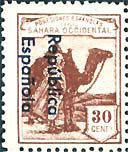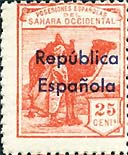|

|
SAHARAN NATURE
DROMEDARIES AND DRIVERS
|

|
SPECIAL ADAPTATIONS
Everything at camels is adapted for life on the desert. Feet are broadened to
walk on sand. Eyelashes protect eyes from wind-blown sand. Nostrils close
to keep sand out. Lips are thickened to withstand the coarsest of desert
plants. Coloration matches the environment. Callouses are present on knees
and other parts of the body that touch the hot sand when the animal sits
down. Hump is a flesh mound not supported by bones. A reserve of fat (not
water) is stored in the hump. Hump size varies with food supply and
working conditions. Can tolerate a rise in temperature of 12 degrees
Fahrenheit. Able to drink brackish or salt water. Camels exhibit unusual
tolerance for dehydration.

Most animals perish when 20% of their body weight is lost. Camels
survive a 40% loss of body weight without serious consequences. Heavy fur
and the fatty hump serve to insulate the body, preventing body temperature
from rising to the sweating point (the major cause of water loss). When
water again becomes available, camels are able to restore their body water
quickly; they have been known to drink one third of their body weight in
10 minutes.
INTERPRETIVE INFORMATION
Camels run like a giraffe with both legs on one side of the body
moving simultaneously. The resulting rocking, shuffling gait gave rise to
the term "Ship of the Desert". Camels have been used as beasts of burden
for centuries. They are known for their loathing of men and forms of work.
Spit foul-smelling stomach contents when annoyed. Arabs utilize almost
every portion of the body. Tents are made of camel-hair cloth. The flesh
of young camel is said to taste similar to veal. Camel milk is nutritious
and cheese is also made from it. Skin makes good leather. Dried bones are
substituted for ivory. Dung is burned as fuel on the desert. The name
"Dromedary" is properly reserved for the Arabian racing camel such as
those used in the various military camel corps. These camels can travel 80
to 120 miles per day carrying a rider. Arabian baggage camels have a
heavier build and are capable of carrying a 200 kg load up to 40 miles per
day. There are 160 words for camel in Arabic.
STATUS IN WILD
Fossil remains indicate that the camel family originated in North
America. Only guanacos and vicunas may be found wild in the New World
today. Llamas and alpacas have been domesticated. Camels exist only in the
domesticated state in Africa and Asia. The Arabian camel has been
successfully introduced into Australian desert regions where it is now
feral. Attempts to introduce them into southern Europe and North America
have failed.
(Source:
http://www.oaklandzoo.org/atoz/azcamel.html)

The selection of Spanish Sahara issues, dedicated to dromedaries and to
their drivers,
covers the 1950th to the 1960th years.
Credits: many thanks to Tracy Barber
(USA) for the scans.
|